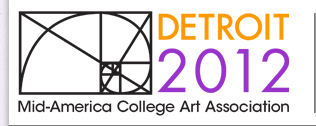Session Title
Michigan Legacy Art Park: A Different Kind of Scuplture Park
Start Date
5-10-2012 1:15 PM
End Date
5-10-2012 2:45 PM
Session Description
This session will explore the development of Michigan Legacy Art Park and the personal experiences of the artists who have work in the collection of the Art Park.
While working on global art projects in the 1980’s, sculptor David Barr became intrigued by the artistic challenges posed by a series of question. How could the complex history of Michigan be experienced beyond the traditional museums and education programs? Were there ways of making history into a more vibrant experience? What was missing from conventional responses to convey history?
What was not being addressed, he thought, were expressive components of history; that is, contemporary artists’ (not illustrators') responses and voices interpreting history. Even if artists may have privately created or yearned to expressively create this untapped resource the dilemma was where to find a public site to nurture those responses.
Most museums and art parks showed work they determined as pertinent to a pre-existing, conventionally established, art world criterion but that had little regional relationship, and were negligible in addressing the 1980s environmental or ecological focus. At the time Barr knew of no art park that addressed these issues or highlighted the beauty of Michigan. It was within these constraints and concerns that the seed of Michigan Legacy Art Park took root.
Michigan Legacy Art Park: A Different Kind of Scuplture Park
This session will explore the development of Michigan Legacy Art Park and the personal experiences of the artists who have work in the collection of the Art Park.
While working on global art projects in the 1980’s, sculptor David Barr became intrigued by the artistic challenges posed by a series of question. How could the complex history of Michigan be experienced beyond the traditional museums and education programs? Were there ways of making history into a more vibrant experience? What was missing from conventional responses to convey history?
What was not being addressed, he thought, were expressive components of history; that is, contemporary artists’ (not illustrators') responses and voices interpreting history. Even if artists may have privately created or yearned to expressively create this untapped resource the dilemma was where to find a public site to nurture those responses.
Most museums and art parks showed work they determined as pertinent to a pre-existing, conventionally established, art world criterion but that had little regional relationship, and were negligible in addressing the 1980s environmental or ecological focus. At the time Barr knew of no art park that addressed these issues or highlighted the beauty of Michigan. It was within these constraints and concerns that the seed of Michigan Legacy Art Park took root.

